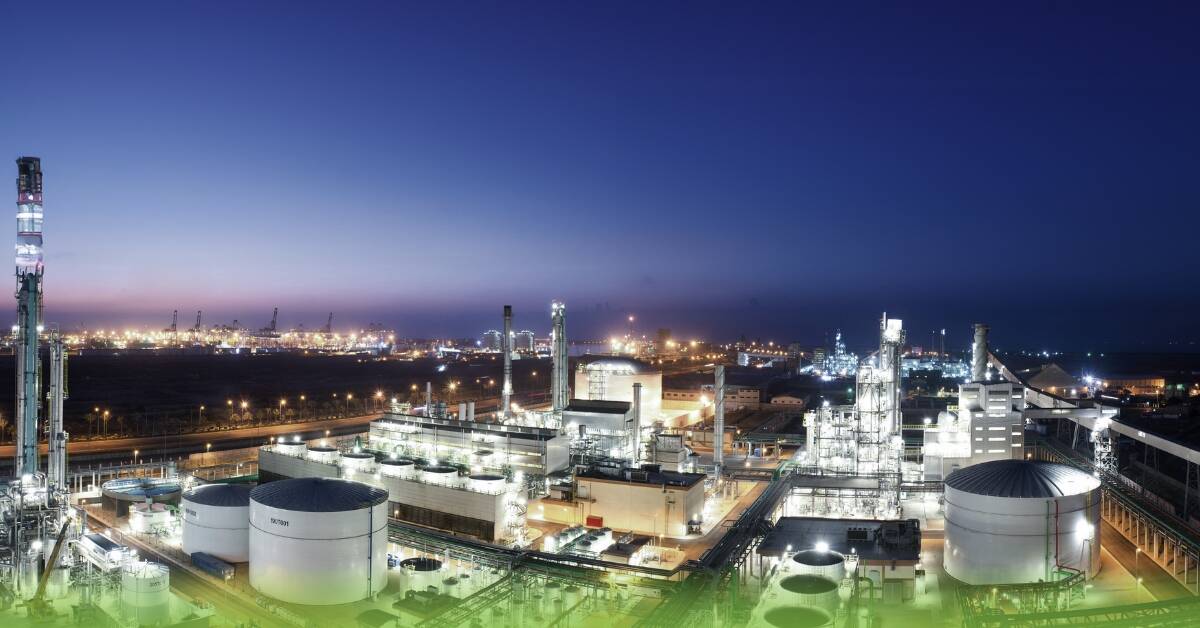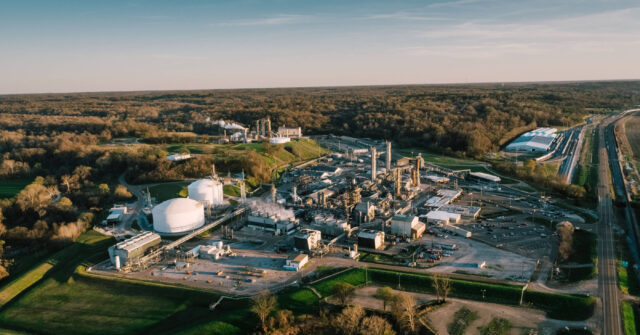
The U.S. blue ammonia sector is witnessing an unprecedented transformation that's catching the attention of energy giants worldwide. With the market valued at just $37 million in 2025, projections show an explosive climb to $1.23 billion by 2035, representing a compound annual growth rate of 42.68%. This remarkable expansion is fueled by federal incentives, breakthrough carbon capture technologies, and massive investments pouring into North American infrastructure projects that position the region as a global clean energy powerhouse.
The growth trajectory isn't just impressive on paper. CF Industries, JERA, and Mitsui recently announced a $4 billion joint venture for the Blue Point Complex in Louisiana, set to produce 1.4 million metric tons of low-carbon ammonia annually starting in 2029. This single facility would become the world's largest ammonia production plant by nameplate capacity, capturing more than 95% of carbon dioxide emissions through advanced autothermal reforming and sequestration technologies.
>> RELATED: [x](x)

North American Projects Drive Market Expansion
Beyond the Louisiana megaproject, significant developments are emerging across North America. DL E&C and Genesis Fertilizers signed a $35 million contract in November for a groundbreaking facility in Belle Plaine, Saskatchewan. The plant will process 1,500 tons of blue ammonia daily, producing approximately 1.05 million tons of fertilizer annually while eliminating 95% of carbon emissions through CARBONCO's advanced capture technology.
The Saskatchewan project represents a strategic expansion into the Canadian market, leveraging the region's abundant natural gas resources and supportive policy environment.

"Canada, rich in natural resources like natural gas, is expected to continue awarding large-scale plant projects."
Yoo Jae-ho, Head of DL E&C's Plant Business Division
The facility will capture approximately 800,000 tons of carbon dioxide annually, sending it via pipeline to an underground storage site 16 kilometers away for permanent sequestration.
Market Growth Snapshot
- 2025 Market Value: $37 million
- 2035 Projection: $1.23 billion
- Growth Rate: 42.68% CAGR
- Blue Point Capacity: 1.4 million metric tons annually
- Saskatchewan Plant: 1,500 tons per day production
- CO₂ Capture Rate: Greater than 95% at major facilities
- Blue Point Investment: $4 billion total project cost
- Expected Jobs: 3,900 construction jobs in Louisiana alone
Federal Incentives Fuel Investment Wave
The explosion in blue ammonia development isn't happening in a vacuum. Government support through the Inflation Reduction Act's 45Q tax credits is providing crucial financial backing that makes large-scale carbon capture economically viable. These incentives allow producers to reduce costs while maintaining competitive pricing, creating a pathway for blue ammonia to challenge traditional gray ammonia production.
The tax credit structure particularly benefits projects that achieve high carbon capture rates. Facilities capturing and permanently sequestering CO₂ can receive substantial credits per metric ton, dramatically improving project economics. This policy framework has accelerated final investment decisions across multiple projects, with developers rushing to lock in advantages before potential policy shifts.

>> In Other News: Canada Nickel Announces the Referral of the Company's Crawford Project to the Major Projects Office by the Government of Canada
Technology Breakthroughs Enable Massive Scale
Advanced autothermal reforming technology stands at the heart of this blue ammonia revolution. Unlike conventional steam methane reforming, ATR allows for carbon capture rates exceeding 95%, making blue ammonia a genuinely low-carbon solution. The Blue Point Complex will utilize this cutting-edge approach, pairing it with Occidental's 1PointFive sequestration services to permanently store approximately 2.3 million metric tons of CO₂ annually.
The integration of proven technologies is accelerating deployment timelines. Projects are moving from concept to construction faster than ever, with the Blue Point facility expected to begin operations by 2029. This rapid progression demonstrates growing confidence in both the technical feasibility and commercial viability of large-scale blue ammonia production.

"CF Industries is proud to partner with global leaders JERA and Mitsui to build the leading low-carbon ammonia production facility in the world."
Tony Will, President and Chief Executive Officer, CF Industries Holdings, Inc.
Multiple Applications Drive Demand Growth
Blue ammonia's appeal extends far beyond traditional fertilizer markets. The compound is gaining traction as a critical component in several emerging sectors that are reshaping global energy systems. Its versatility positions it as a cornerstone of decarbonization strategies across multiple hard-to-abate industries.

Key Market Applications
Global Export Opportunities Expand Market Potential
International partnerships are amplifying the strategic value of North American blue ammonia production. Japan, represented through JERA and Mitsui's participation in the Blue Point project, has established substantial import targets as part of its national hydrogen strategy. The Asian nation views blue ammonia as essential for meeting decarbonization commitments while maintaining energy security.
European markets are also expressing strong interest in North American supplies. CF Industries has already shipped certified low-carbon ammonia from Louisiana facilities to European customers, demonstrating established trade routes and market demand. These international connections provide revenue stability for producers while helping partner nations achieve climate goals.

Infrastructure Advantages Position North America as Leader
The Gulf Coast region particularly benefits from existing industrial infrastructure that reduces deployment costs and timelines. Extensive pipeline networks, deep-water port facilities, and established industrial expertise create natural advantages for blue ammonia development. Louisiana's successful defense of its Class VI primacy for carbon storage further strengthens the regulatory foundation supporting these projects.
Natural gas abundance across North America provides feedstock security at competitive prices. This resource advantage, combined with advancing carbon capture technologies and supportive policy frameworks, creates a powerful combination driving the sector's explosive growth trajectory through 2035 and beyond.
Economic Impact Extends Beyond Production Facilities
The blue ammonia boom is creating substantial economic opportunities across construction, manufacturing, and permanent operations. The Blue Point Complex alone is expected to generate 3,900 construction jobs over four years, with an additional 3,400 indirect and induced positions. Once operational, the facility will provide 103 permanent full-time positions with average salaries of approximately $110,000 annually.
Similar economic benefits are materializing across other projects. The Genesis Fertilizers facility in Saskatchewan anticipates creating over 1,500 construction jobs and 180 permanent operational roles. These positions represent high-quality employment opportunities in regions undergoing energy transitions, providing economic stability and growth prospects for local communities.
Investment Momentum Signals Long-Term Industry Confidence
The scale of capital commitments demonstrates that blue ammonia has moved beyond experimental phases into commercial reality. When global energy companies commit billions to decade-long projects, it signals deep confidence in both technology performance and market demand. The Blue Point venture represents one of the largest clean energy infrastructure investments in U.S. history.
Private sector momentum is complementing government support, creating a robust foundation for sustained growth. Companies are not waiting for policy certainty to move forward, instead making strategic bets that position them as early leaders in what's expected to become a multi-billion dollar global market by mid-century. This combination of public incentives and private capital is accelerating the timeline for blue ammonia to achieve cost parity with conventional production methods.
As the U.S. blue ammonia market surges toward its $1.23 billion milestone, the sector is establishing itself as a cornerstone of North America's clean energy future. With major facilities breaking ground, proven technologies scaling rapidly, and international partnerships solidifying, blue ammonia is transitioning from a promising concept to an industrial reality at a pace that's exceeding even optimistic projections from just a few years ago.
Subscribe to the newsletter
Daily decarbonization data and news delivered to your inbox
Follow the money flow of climate, technology, and energy investments to uncover new opportunities and jobs.
Companies
Latest issues
-
Inside XCF Global's $300M Bet to Double U.S. SAF Output
Inside This Issue ✈️ Inside XCF Global's $300M Bet to Double U.S. SAF Output ⚙️ Capsol Technologies Signs MoU with US Utility to Deploy CapsolGT® for Low-carbon Gas Power Generation 🏭 Babcock &...
-
64 Carbon Projects Were Stuck. Texas Just Unlocked Them
Inside This Issue 🛢️ 64 Carbon Projects Were Stuck. Texas Just Unlocked Them ⚙️ In Ohio, Hydrogen Industry Presses on Despite Federal Uncertainty 🧲 Agami Zero Breaks Through With Magnetic Hydrogen...
-
This U.S. Plant Might Change Aviation Forever
In This Issue 🛫 A Georgia Plant Just Cracked Aviation's Fuel Puzzle 📉 CO2RE And ERM Release 2025 Update On Greenhouse Gas Removal Costs 🔗 Abatable Partners With BlueLayer To Streamline Corporate C...
Company Announcements
-
Anaergia Technologies, LLC to Provide Integrated Waste-to-Energy Technology for PepsiCo Mexico Foods
Contract Extending Relationship with PepsiCo is Anaergia’s First Project in Mexico CARLSBAD, California & BURLINGTON, Ontario—Anaergia Inc. (TSX: ANRG) (OTCQX: ANRGF), through its subsidiary, ...
-
Green Plains Achieves a Milestone as CO2 from Nebraska is Sequestered in Wyoming
All Three Nebraska Facilities Now Capturing CO2; First 45Z Payment Demonstrates Early Value OMAHA, Neb.—Green Plains Inc. (NASDAQ: GPRE) today announced that biogenic carbon dioxide from all three...
-
North America on Track for ICAO’s 2030 Cleaner-Energy Target as Other Regions Lag
IBA, the aviation market intelligence and advisory company, reports that North America is currently the only global region on track to meet the International Civil Aviation Organisation (ICAO) clea...
-
CHARBONE Taps Air Liquide Veteran Ahead of First Revenue From Flagship Project
BROSSARD, QUEBEC - December 9, 2025 (NEWMEDIAWIRE) - CHARBONE CORPORATION (TSXV: CH; OTCQB: CHHYF; FSE: K47) ("CHARBONE" or the "Company"), a North American producer and distributor specializing in...